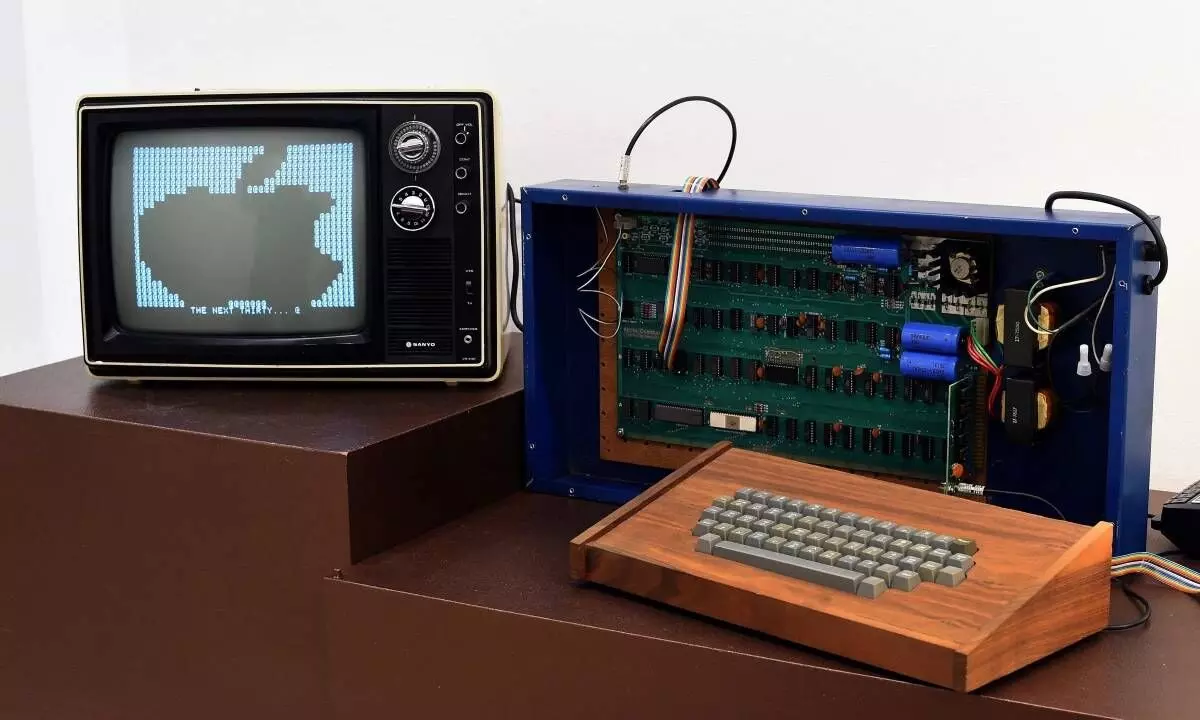From Garage to Glory: Unraveling the Apple I Pioneers
image for illustrative purpose

The year was 1976, and in a humble garage in Cupertino, California, two visionaries, Steve Jobs and Steve Wozniak, were about to change the world of technology forever. This is the story of Apple's first-ever product, the revolutionary Apple I computer, and how it laid the foundation for the tech giant's meteoric rise to global prominence.
Before the creation of the Apple I, both Jobs and Wozniak had been tinkering with computers and electronics. The duo shared a passion for technology and a desire to create something extraordinary. Wozniak, an engineering genius, designed the computer while Jobs saw its potential and envisioned
In 1976, Wozniak completed the construction of the Apple I, a single-board computer. It was a far cry from today's sleek and compact devices, consisting only of a motherboard with basic components. The Apple I featured the MOS 6502 microprocessor, 4 KB of RAM, and could be connected to a TV monitor. It lacked a keyboard, monitor, and casing, requiring users to supply their own peripherals.
The Apple I made its debut at the Homebrew Computer Club in Palo Alto, California, in July 1976. The response was enthusiastic, and the computer found its first buyers, mostly electronics enthusiasts and hobbyists. Priced at $666.66, approximately 200 units were sold, making it a limited but groundbreaking success.
The success of the Apple I laid the foundation for the establishment of Apple Computer Inc. On April 1, 1976, the two Steves founded the company, and later that year, they received their first major order for 50 Apple I computers from a local computer store. This development marked the beginning of Apple's journey to become a major player in the burgeoning personal computer industry.
Though the Apple I was a modest success in terms of sales, its significance extended far beyond its numbers. It laid the groundwork for what was to come, setting the stage for Apple's future innovations. The computer demonstrated the potential for personal computing, inspiring the team to develop more advanced models.
The Apple I was a significant technological achievement. It showcased Wozniak's brilliance as an engineer and was one of the first personal computers to be sold as a fully assembled motherboard. This feat made it accessible to a broader audience, sparking the interest of computer enthusiasts and early adopters.
The success of the Apple I provided the financial means to develop its successor, the Apple II, which was released in 1977. The Apple II was a commercial hit and further solidified the company's place in the personal computer market. With its user-friendly design and innovative features, the Apple II became a staple in homes, schools, and businesses.
Today, the Apple I is a rare and valuable collector's item. Only a handful of original Apple I computers are known to exist, and they fetch astronomical prices at auctions. Its historical significance, as the catalyst that ignited Apple's journey to greatness, has cemented its place in the annals of computing history.
Interestingly, the Henry Ford Museum in Michigan, USA, is known to possess an Apple I in its collection. The late co-founder of Microsoft, Paul Allen, was a prominent technology collector and owned an Apple I. The curator of the Computer History Museum in California, Dag Spicer, confirmed that the museum had an original Apple I.
Also, several private collectors around the world have acquired an Apple I as part of their valuable technology collections.

